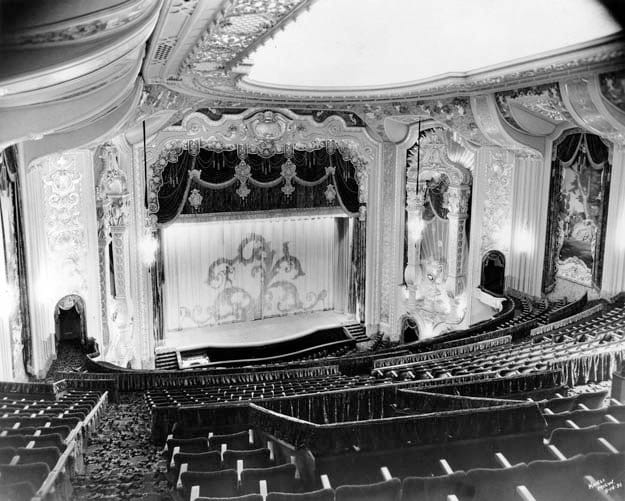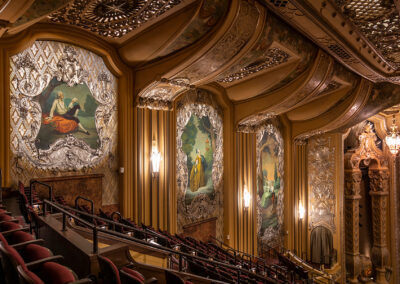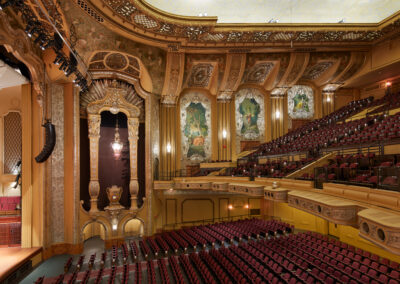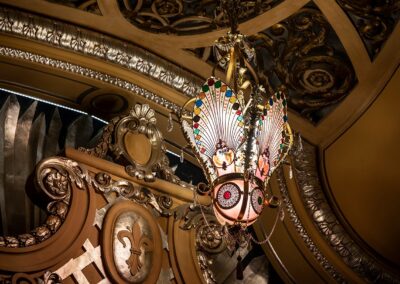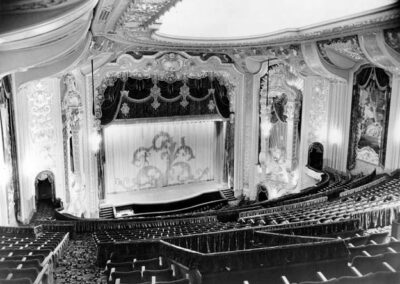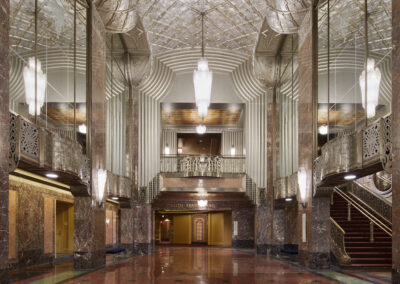Bradley Symphony Center - Warner Grand Theater
Milwaukee, WisconsinThe Warner Grand Theater in Milwaukee, Wisconsin was designed by prolific theatre architects Rapp and Rapp and first opened to the public in 1931. After serving many years as an opulent movie palace, the building closed in 1995, remaining vacant until 2017, when it was purchased by the Milwaukee Symphony Orchestra and renovations began. Four years later, the space has been renewed, restored, and in some cases completely transformed into Bradley Symphony Center, a practical and contemporary performance space with all the elegance and character of a historic arts venue.
Early in the planning phases, the project team recognized the importance of the theatre’s classic historic character. Preservation consultants and restoration experts were brought on board to identify character-defining historic features to be retained and preserved during the rehabilitation. Careful attention to detail during pre-project development was vital to the success of the project, establishing standards and guidelines for preserving the building’s unique character.
During the theater’s first sixty years, alterations were made to the interior. Walls were re-painted, concession stands were added and removed, and the house was divided into two separate rooms, resulting in the loss of the original balcony face. Flooding in the basement compromised exotic wood veneer finishes. Regular wear also took its toll, with layers of smoke and dirt obscuring murals and dulling finishes.
This rehabilitation involved the reversal of many inappropriate changes as well as thoughtful alterations that make the space practical for modern use. Murals and glazed metal leaf were cleaned and conserved. Metalwork and stone were polished and repaired. Exotic wood veneers were reconstructed. Original color schemes were identified and re-instated. Elegant light fixtures were re-wired and missing items were replicated. The balcony face was re-created. The original blade sign was replicated and installed on Wisconsin Avenue. Acoustical issues required moving the rear wall of the underbalcony forward into the seating area, resulting in a re-configured sound booth and additional rear bar. The existing building to the north of the theatre was demolished and replaced with a new addition to serve as a multi-use space. Perhaps most dramatic, the entire north wall of the stage was moved 35 feet – to expand the stage depth to accommodate live performances while retaining the historic character of the exterior wall. New additions to the west of the building include a loading dock, office space, and expanded dressing rooms.
The rehabilitated theatre features a unique combination of architectural styles. The Grand Lobby shines with Art Deco glamour, with etched mirrored panels, glazed metal leaf, and stylized murals. The French Renaissance House includes traditional murals by prolific artist Louis Grell, framed in opulent ornamental plaster, gilded details, and faux marble wainscot. A new addition to the north provides a versatile, multi-use space in a clean, modern style that complements, rather than copies, the historic part of the building.
The transformation of the former Warner Grand Theatre into Bradley Symphony Center preserves an important part of Milwaukee’s architectural history while revitalizing it for a new use and a thriving arts scene.
AWARD-WINNING WORK
Conrad Schmitt Studios, Inc. was pleased to accept the 2021 Acanthus Award for Preservation and Restoration and the Acanthus Award of Arete from the Institute of Classical Art and Architecture for our restoration of the Bradley Symphony Center.
Finished Theatre. Photo by Scott Paulus.
Historical photo circa 1930.
Related Services For This Project:
Related Media For This Project:
- Before and After Theater and Stage Photos of MSO’s Warner Grande Theatre Historic Restoration Project for the New Bradley Symphony Center
- Metropolis Magazine – The Milwaukee Symphony Orchestra Moves into a Restored Movie Palace
- Milwaukee Symphony Orchestra – Symphony Hall Update: Mural Restoration, Winter 2019


